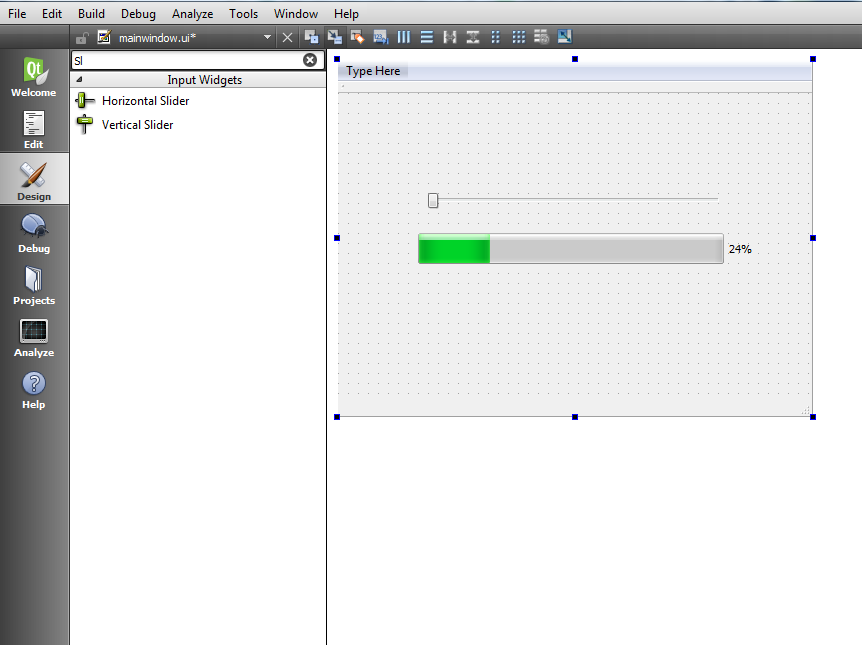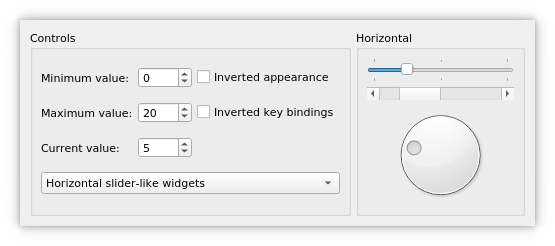Qt5 Signal And Slots Example
- Python Qt5 Example
- Qt5 Signal And Slots Examples
- Qt Signal Slot Example
- Qt5 Tutorial
- Qt5 Signals And Slots Example
- Qt Signal Slot Example C
My app, consists in 2 different object (QObject and QMainWIndow), and I am wondering how to communicate between them with SLOT/SIGNAL. Moreover, does existing better approach? Can someone make an simple example? Qt documentation: The new Qt5 connection syntax. The conventional connect syntax that uses SIGNAL and SLOT macros works entirely at runtime, which has two drawbacks: it has some runtime overhead (resulting also in binary size overhead), and there's no compile-time correctness checking. The new syntax addresses both issues. Before checking the syntax in an example, we'd better know. Qt5 Tutorial: QTcpSocket with Signals and Slots. In this tutorial, we will learn how to download a file using QTcpSocket.This is a continued tutorial from the previous one, Qt 5 QTcpSocket.We're going to use Signal and Slot mechanism instead of calling functions manually(?).
Python Qt5 Example
Signals and slots are used to connect between an event from gui and a function. In other words, you can manage situations what happens after an situations.
For example:
on this example, we say that, call the onButtonClicked() function after button clicked:
If you want to get signals, you must connect these to slots. Slots are functions defined as slot like this example:
this code on header file.
And last important think is that, signals and slots must have same parameters. It works:
But there is no connection in this example:
QCombobox Signals And Slots
last modified July 16, 2020
In this part of the Qt5 C++ programming tutorial we talk about events and signals.
Events are an important part in any GUI program. All GUI applications are event-driven. An application reacts to different event types which are generated during its life. Events are generated mainly by the user of an application. But they can be generated by other means as well, e.g. Internet connection, window manager, or a timer. In the event model, there are three participants:
- event source
- event object
- event target
The event source is the object whose state changes. It generates Events. The event object (Event) encapsulates the state changes in the event source.The event target is the object that wants to be notified. Event source object delegates the task of handling an event to the event target.
When we call the application's exec() method, the applicationenters the main loop. The main loop fetches events and sends them to the objects. Qt has a unique signal and slot mechanism. This signal and slot mechanism is an extension to the C++ programming language.
Signals and slots are used for communication between objects. A signal is emitted when a particular event occurs. A slot is a normal C++ method;it is called when a signal connected to it is emitted.
Click
The first example shows a very simple event handling example. We have one push button. By clicking on the push button, we terminate the application.
This is the header file.
We display a QPushButton on the window.
The connect() method connects a signal to the slot. When we click on the Quit button, the clicked signal is generated. The qApp is a global pointer to the application object. It is defined in the <QApplication> header file. The quit() method is called when the clicked signal is emitted.
This is the main file.
KeyPress
In the following example, we react to a key press.
This is the keypress.h header file.
The application terminates if we press the Escape key.
Qt5 Signal And Slots Examples
One of the ways of working with events in Qt5 is to reimplement an event handler. The QKeyEvent is an event object, which holds information about what has happened. In our case, we use the event object to determine which key was actually pressed.
Qt Signal Slot Example
This is the main file.
QMoveEvent
The QMoveEvent class contains event parameters for move events.Move events are sent to widgets that have been moved.
This is the move.h header file.
In our code programming example, we react to a move event. We determine the current x, y coordinates of the upper left corner of the client area of the window and set those values to the title of the window.
We use the QMoveEvent object to determine the x, y values.
We convert the integer values to strings.
The setWindowTitle() method sets the text to the title of the window.
This is the main file.
Disconnecting a signal

A signal can be disconnected from the slot. The next example shows how we can accomplish this.

In the header file, we have declared two slots. The slots is not a C++ keyword, it is a Qt5 extension. These extensions are handled by the preprocessor, before the code is compiled. When we use signals and slots in our classes, we must provide a Q_OBJECT macro at the beginning of the class definition. Otherwise, the preprocessor would complain.
In our example, we have a button and a check box. The check box connects and disconnects a slot from the buttons clicked signal. This example must be executed from the command line.
Here we connect signals to our user defined slots.
If we click on the Click button, we send the 'Button clicked' text to the terminal window.
Inside the onCheck() slot, we connect or disconnect the onClick() slot from the Click button, depending on the received state.
This is the main file.

Qt5 Tutorial
Timer
A timer is used to implement single shot or repetitive tasks. A good example where we use a timer is a clock; each second we must update our label displaying the current time.
This is the header file.
In our example, we display a current local time on the window.
To display a time, we use a label widget.
Here we determine the current local time. We set it to the label widget.
We start the timer. Every 1000 ms a timer event is generated.
Qt5 Signals And Slots Example
To work with timer events, we must reimplement the timerEvent() method.
Qt Signal Slot Example C
This is the main file.

This chapter was dedicated to events and signals in Qt5.